12.28: Clasificación de Vertebrados
- Page ID
- 107892
\( \newcommand{\vecs}[1]{\overset { \scriptstyle \rightharpoonup} {\mathbf{#1}} } \)
\( \newcommand{\vecd}[1]{\overset{-\!-\!\rightharpoonup}{\vphantom{a}\smash {#1}}} \)
\( \newcommand{\dsum}{\displaystyle\sum\limits} \)
\( \newcommand{\dint}{\displaystyle\int\limits} \)
\( \newcommand{\dlim}{\displaystyle\lim\limits} \)
\( \newcommand{\id}{\mathrm{id}}\) \( \newcommand{\Span}{\mathrm{span}}\)
( \newcommand{\kernel}{\mathrm{null}\,}\) \( \newcommand{\range}{\mathrm{range}\,}\)
\( \newcommand{\RealPart}{\mathrm{Re}}\) \( \newcommand{\ImaginaryPart}{\mathrm{Im}}\)
\( \newcommand{\Argument}{\mathrm{Arg}}\) \( \newcommand{\norm}[1]{\| #1 \|}\)
\( \newcommand{\inner}[2]{\langle #1, #2 \rangle}\)
\( \newcommand{\Span}{\mathrm{span}}\)
\( \newcommand{\id}{\mathrm{id}}\)
\( \newcommand{\Span}{\mathrm{span}}\)
\( \newcommand{\kernel}{\mathrm{null}\,}\)
\( \newcommand{\range}{\mathrm{range}\,}\)
\( \newcommand{\RealPart}{\mathrm{Re}}\)
\( \newcommand{\ImaginaryPart}{\mathrm{Im}}\)
\( \newcommand{\Argument}{\mathrm{Arg}}\)
\( \newcommand{\norm}[1]{\| #1 \|}\)
\( \newcommand{\inner}[2]{\langle #1, #2 \rangle}\)
\( \newcommand{\Span}{\mathrm{span}}\) \( \newcommand{\AA}{\unicode[.8,0]{x212B}}\)
\( \newcommand{\vectorA}[1]{\vec{#1}} % arrow\)
\( \newcommand{\vectorAt}[1]{\vec{\text{#1}}} % arrow\)
\( \newcommand{\vectorB}[1]{\overset { \scriptstyle \rightharpoonup} {\mathbf{#1}} } \)
\( \newcommand{\vectorC}[1]{\textbf{#1}} \)
\( \newcommand{\vectorD}[1]{\overrightarrow{#1}} \)
\( \newcommand{\vectorDt}[1]{\overrightarrow{\text{#1}}} \)
\( \newcommand{\vectE}[1]{\overset{-\!-\!\rightharpoonup}{\vphantom{a}\smash{\mathbf {#1}}}} \)
\( \newcommand{\vecs}[1]{\overset { \scriptstyle \rightharpoonup} {\mathbf{#1}} } \)
\( \newcommand{\vecd}[1]{\overset{-\!-\!\rightharpoonup}{\vphantom{a}\smash {#1}}} \)
\(\newcommand{\avec}{\mathbf a}\) \(\newcommand{\bvec}{\mathbf b}\) \(\newcommand{\cvec}{\mathbf c}\) \(\newcommand{\dvec}{\mathbf d}\) \(\newcommand{\dtil}{\widetilde{\mathbf d}}\) \(\newcommand{\evec}{\mathbf e}\) \(\newcommand{\fvec}{\mathbf f}\) \(\newcommand{\nvec}{\mathbf n}\) \(\newcommand{\pvec}{\mathbf p}\) \(\newcommand{\qvec}{\mathbf q}\) \(\newcommand{\svec}{\mathbf s}\) \(\newcommand{\tvec}{\mathbf t}\) \(\newcommand{\uvec}{\mathbf u}\) \(\newcommand{\vvec}{\mathbf v}\) \(\newcommand{\wvec}{\mathbf w}\) \(\newcommand{\xvec}{\mathbf x}\) \(\newcommand{\yvec}{\mathbf y}\) \(\newcommand{\zvec}{\mathbf z}\) \(\newcommand{\rvec}{\mathbf r}\) \(\newcommand{\mvec}{\mathbf m}\) \(\newcommand{\zerovec}{\mathbf 0}\) \(\newcommand{\onevec}{\mathbf 1}\) \(\newcommand{\real}{\mathbb R}\) \(\newcommand{\twovec}[2]{\left[\begin{array}{r}#1 \\ #2 \end{array}\right]}\) \(\newcommand{\ctwovec}[2]{\left[\begin{array}{c}#1 \\ #2 \end{array}\right]}\) \(\newcommand{\threevec}[3]{\left[\begin{array}{r}#1 \\ #2 \\ #3 \end{array}\right]}\) \(\newcommand{\cthreevec}[3]{\left[\begin{array}{c}#1 \\ #2 \\ #3 \end{array}\right]}\) \(\newcommand{\fourvec}[4]{\left[\begin{array}{r}#1 \\ #2 \\ #3 \\ #4 \end{array}\right]}\) \(\newcommand{\cfourvec}[4]{\left[\begin{array}{c}#1 \\ #2 \\ #3 \\ #4 \end{array}\right]}\) \(\newcommand{\fivevec}[5]{\left[\begin{array}{r}#1 \\ #2 \\ #3 \\ #4 \\ #5 \\ \end{array}\right]}\) \(\newcommand{\cfivevec}[5]{\left[\begin{array}{c}#1 \\ #2 \\ #3 \\ #4 \\ #5 \\ \end{array}\right]}\) \(\newcommand{\mattwo}[4]{\left[\begin{array}{rr}#1 \amp #2 \\ #3 \amp #4 \\ \end{array}\right]}\) \(\newcommand{\laspan}[1]{\text{Span}\{#1\}}\) \(\newcommand{\bcal}{\cal B}\) \(\newcommand{\ccal}{\cal C}\) \(\newcommand{\scal}{\cal S}\) \(\newcommand{\wcal}{\cal W}\) \(\newcommand{\ecal}{\cal E}\) \(\newcommand{\coords}[2]{\left\{#1\right\}_{#2}}\) \(\newcommand{\gray}[1]{\color{gray}{#1}}\) \(\newcommand{\lgray}[1]{\color{lightgray}{#1}}\) \(\newcommand{\rank}{\operatorname{rank}}\) \(\newcommand{\row}{\text{Row}}\) \(\newcommand{\col}{\text{Col}}\) \(\renewcommand{\row}{\text{Row}}\) \(\newcommand{\nul}{\text{Nul}}\) \(\newcommand{\var}{\text{Var}}\) \(\newcommand{\corr}{\text{corr}}\) \(\newcommand{\len}[1]{\left|#1\right|}\) \(\newcommand{\bbar}{\overline{\bvec}}\) \(\newcommand{\bhat}{\widehat{\bvec}}\) \(\newcommand{\bperp}{\bvec^\perp}\) \(\newcommand{\xhat}{\widehat{\xvec}}\) \(\newcommand{\vhat}{\widehat{\vvec}}\) \(\newcommand{\uhat}{\widehat{\uvec}}\) \(\newcommand{\what}{\widehat{\wvec}}\) \(\newcommand{\Sighat}{\widehat{\Sigma}}\) \(\newcommand{\lt}{<}\) \(\newcommand{\gt}{>}\) \(\newcommand{\amp}{&}\) \(\definecolor{fillinmathshade}{gray}{0.9}\)
La mantarraya. ¿Pescado?
Por supuesto. Pero, ¿de qué tipo? De las nueve clases de vertebrados, cinco son peces. Cada una de las cinco clases tiene características distintivas que permiten clasificar adecuadamente a los miembros. La mantarraya son peces cartilaginosos, relacionados con tiburones.
Clasificación de Vertebrados
Hay alrededor de 50 mil especies de vertebrados, y se ubican en nueve clases diferentes. Cinco de las clases son peces. Las otras clases son anfibios, reptiles, aves y mamíferos. La siguiente tabla enumera algunos de los rasgos distintivos de cada clase. Las clases se listan en orden de evolución.
| Clase | Rasgos Distintivos | Ejemplo |
|---|---|---|
| Hagfish | Tienen cráneo pero no columna vertebral; no tienen mandíbulas; su endoesqueleto está hecho de cartílago; son ectotérmicos. |
hagfish  |
| Lampreas | Tienen una columna vertebral parcial; no tienen mandíbulas; su endoesqueleto está hecho de cartílago; son ectotérmicos. |
lamprea  |
| Peces cartilaginosos | Tienen una columna vertebral completa; tienen mandíbulas; su endoesqueleto está hecho de cartílago; son ectotérmicos. |
tiburón 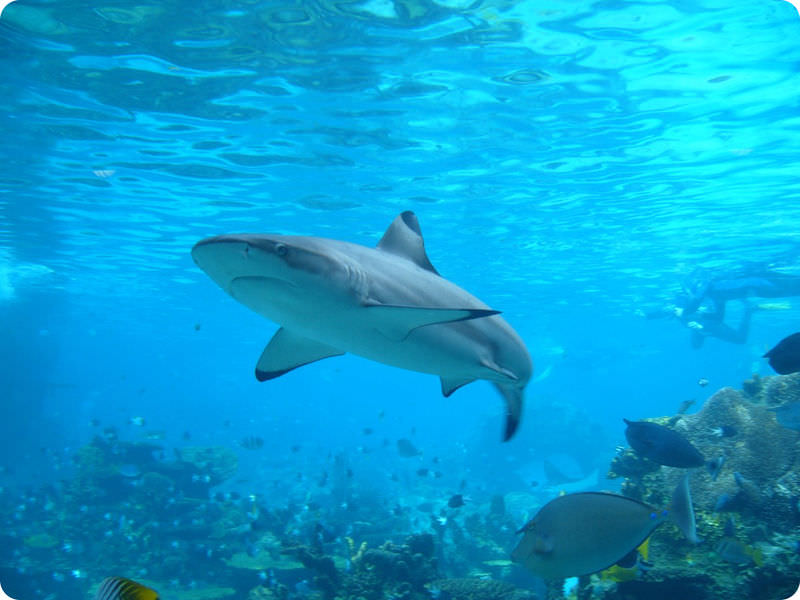 |
| Pez con Aleta Rayada | Tienen columna vertebral y mandíbulas; su endoesqueleto está hecho de huesos; tienen aletas delgadas y óseas; son ectotérmicas. |
perca 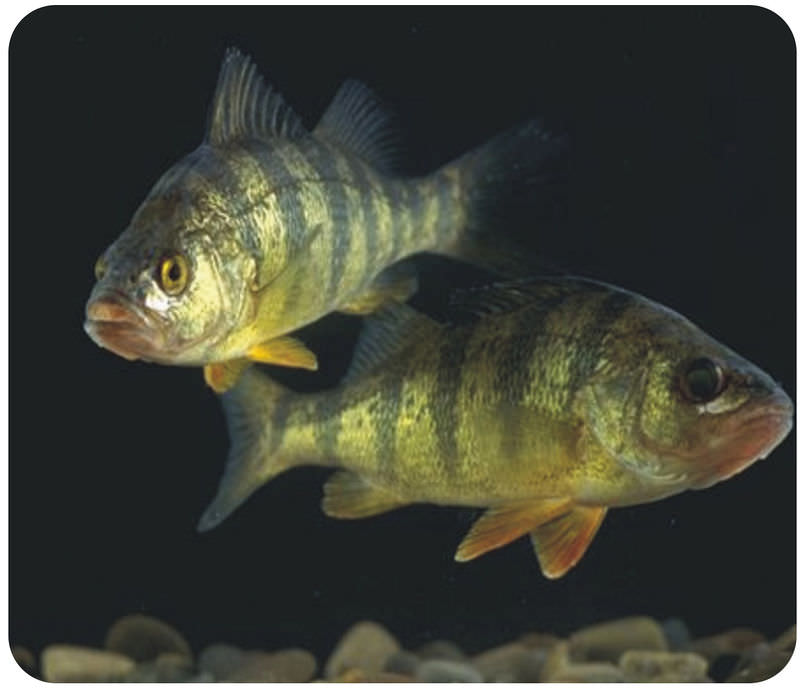 |
| Pez con aletas lobulares | Tienen columna vertebral y mandíbulas; su endoesqueleto está hecho de huesos; tienen aletas gruesas y carnosas; son ectotérmicas. |
celacanto 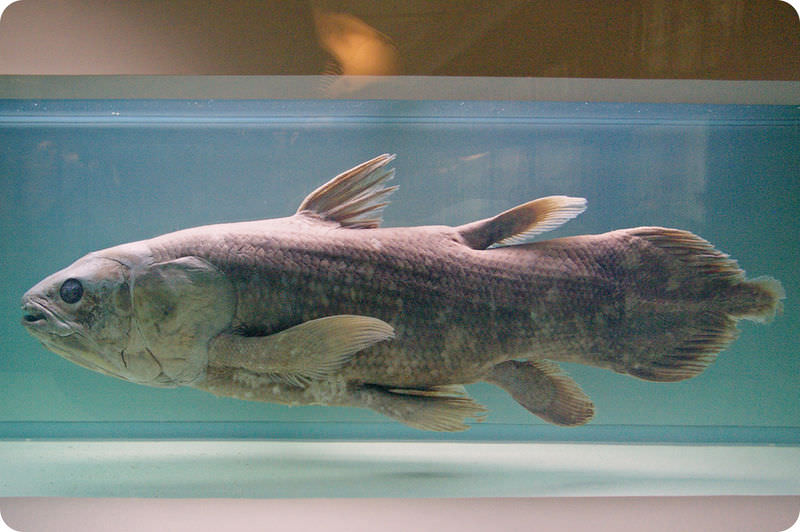 |
| Anfibios | Tienen un endoesqueleto óseo con columna vertebral y mandíbulas; tienen branquias como larvas y pulmones como adultos; tienen cuatro extremidades; son ectotérmicas |
rana  |
| Reptiles | Tienen un endoesqueleto óseo con columna vertebral y mandíbulas; respiran solo con pulmones; tienen cuatro extremidades; su piel está cubierta de escamas; tienen óvulos amnióticos; son ectotérmicos. |
caimán 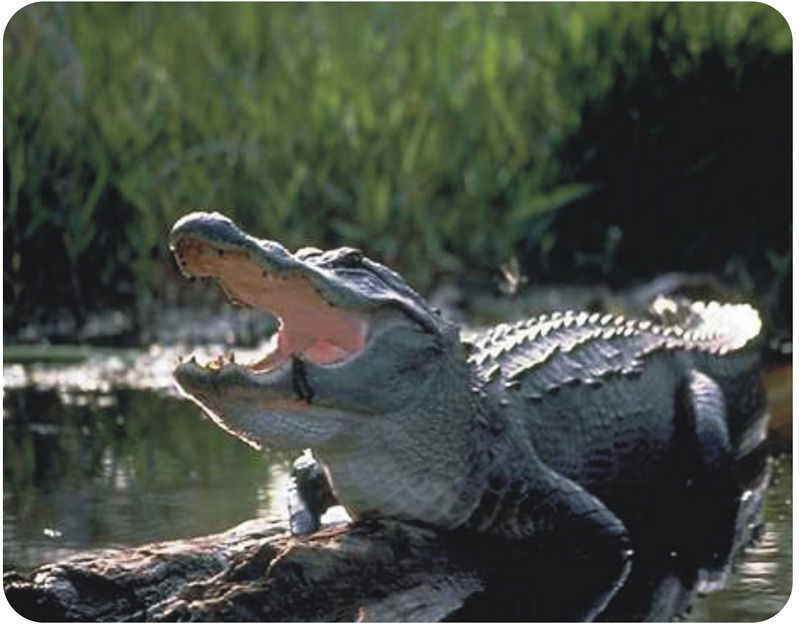 |
| Aves | Tienen un endoesqueleto óseo con columna vertebral pero sin mandíbulas; respiran solo con pulmones; tienen cuatro extremidades, con las dos extremidades delanteras modificadas como alas; su piel está cubierta de plumas; tienen huevos amnióticos; son endotérmicos. |
pájaro 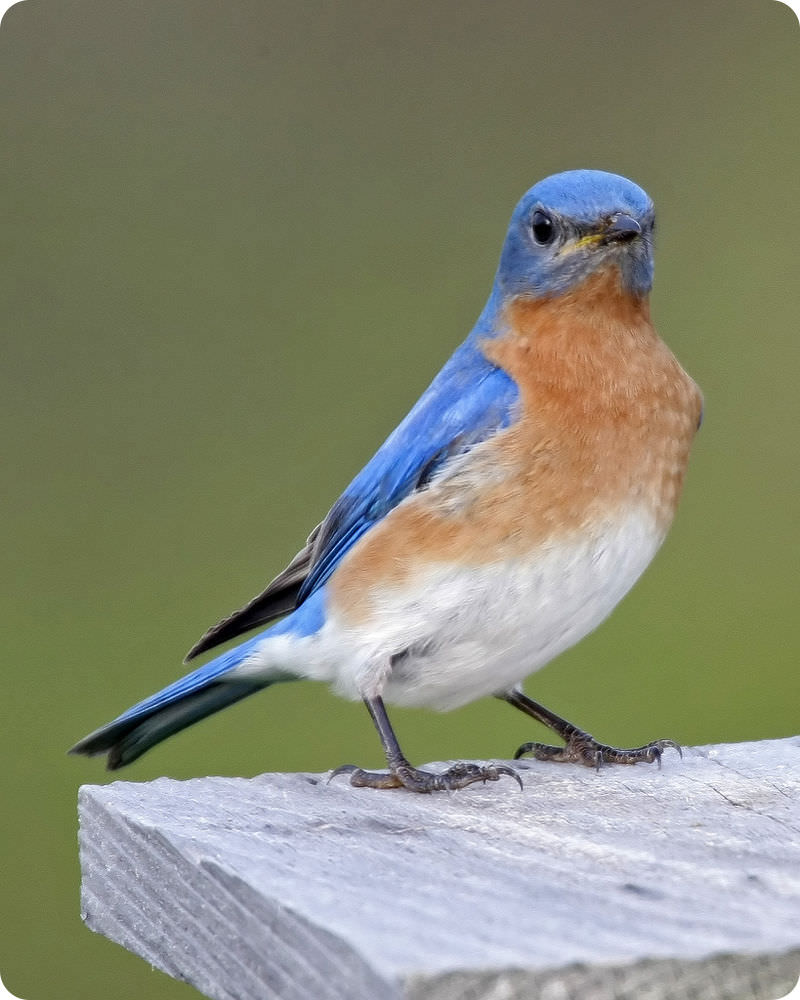 |
| Mamíferos | Tienen un endoesqueleto óseo con columna vertebral y mandíbulas; respiran solo con pulmones; tienen cuatro extremidades; su piel está cubierta de pelo o pelaje; tienen huevos amnióticos; tienen glándulas mamarias (productoras de leche); son endotérmicas. |
oso  |
Resumen
- Las 50,000 especies de vertebrados vivos se ubican en nueve clases: peces hagfish, lampreas, peces cartilaginosos, peces con aletas radioeléctricas, peces lóbulos, anfibios, reptiles, aves y mamíferos.
Revisar
- ¿Cuál fue la primera y última clase de vertebrados en evolucionar?
- ¿Cuáles son las cinco clases de vertebrados de peces?
- ¿Cuáles son las características definitorias de los mamíferos?
- ¿Cuál fue la primera clase de vertebrados en vivir en tierra?
- ¿Los tiburones pertenecen a qué clase de vertebrados?
| Imagen | Referencia | Atribuciones |
 |
[Figura 1] | Crédito: De arriba a abajo: Bryce McQuillan; Dr. James P. McVey, Programa de Subvenciones Marinas de la NOAA; Scott Oves Fuente: De arriba a abajo: www.flickr.com/photos/spidermanbryce2006/1802722621/; www.photolib.noaa.gov/htmls/reef0206.htm; http://www.flickr.com/photos/silicon640c/5968047195/ Licencia: De arriba a abajo CC BY 2.0; Dominio público; CC BY 2.0 |
 |
[Figura 2] | Licencia: CC BY-NC |
 |
[Figura 3] | Licencia: CC BY-NC |
 |
[Figura 4] | Licencia: CC BY-NC |
 |
[Figura 5] | Licencia: CC BY-NC |
 |
[Figura 6] | Licencia: CC BY-NC |
 |
[Figura 7] | Licencia: CC BY-NC |
 |
[Figura 8] | Licencia: CC BY-NC |
 |
[Figura 9] | Licencia: CC BY-NC |
 |
[Figura 10] | Licencia: CC BY-NC |

